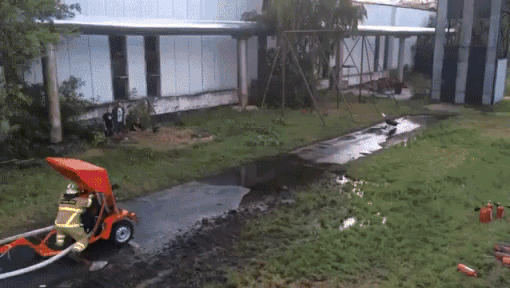A friend of mine was looking at this other rather simple looking laser cutter recently. The kicker that they had was a fine airjet pointed near the Kirf to blow away burnt material. It works really well and would mitegate the need to some extent for using adhesive paper covering on some materials. @dan I’d be interested to see what you and the engineers thought of this. Whether it would be something that could be added on later to the Glowforge as a clip in module.
GF’s answer for air assists is the 30mm fan with scope / blower just behind the head
Aye, I’d much prefer the air assist to point directly down to the ablation point. It’s been proven to help increase cut power.
agree
Queue the “we need to change the power scale again” posts in 3… 2… 1…
I think one of the compromises the GF makes is that the air assist does (or tries to do) two things. One is to clear the ablation point, the other is to generate enough airflow to get the swarf/snow/ash/whatever far enough from the cutting area that it doesn’t disturb subsequent cuts/engraves.
From my experience playing around with roughly 1-watt-class diode lasers, I think that the air jet may also be cooling the area around the ablation point. The less-powerful lasers have to move pretty slowly to cut things, and that offers more time for heat transfer to the surrounding material (I remember being able to make much finer lines on paper than I could on veneer, for example.)
On my other lasers I’ve found that blowing directly down keeps the spot very well clear, usually much more so than from a side-blown fan.
Cutting paper on the gf for example can sometimes blow the strands up into the path of the laser again, pretty much ruining the engrave. A direct stream of air downwards generally will prevent something of this nature.
I’ve also found that most cuts I’ve done with direct air straight down helps keep the hole that is being cut a lot more free of ash. That’s one of the biggest preventers of laser efficacy I’ve seen. Maybe they will release a number of optional head configurations for different performance levels. I think weve seen at least these brought up so far:
- standard head
- advanced head including downward air assist
- lightweight head for faster engraving without all the bells and whistles
- head with rotational mirrors for angled cuts and rotary engraves
when I was trying to do some 3/8 walnut I had huge amounts of ash build up that where not clearing out with the side blow. (adamantly I could have played with settings more but ya know how settings are around here… )
just throws wallet at glowforge
yessss sss ss s
Another wallet? How many wallets do you have?!
Funny, when I first looked at the title of this thread I thought it said AirHead attachment. I thought, doesn’t the world have enough of those? 
Once you actually get a glowforge the number would seem limitless. If you want them filled with money, well that’s a different trick.
One of my concerns looking at this (which admittedly may be unfounded) is that if you change the height of the material on the bed, you’ll also potentially have to move the air assist. Once that is moved, don’t you have to do a bunch of testing to make sure it is in the correct angle with the laser beam?
This looks great in theory, but I fear that it will end up making a LOT more work in the long run.
What happens if you are working with two different materials that are not the same height?
Does the distance from the material and angle of the air assist make a big difference?
i don’t think so, at least at the focal ranges that this laser supports. as long as it’s capable of pushing the minimum amount of air in the worst-case scenario, i think it’d be fine. the biggest side effect imo would be that some materials would work better with it than others.
I plan to use some of the large CO2 bottles feeding into the intake on the Glowforge. The materials that tend to burn will have a tougher time of it when the O2 level drops being displaced by the CO2 from the bottle. Trick will be getting enough CO2 to diminish the possibility fire but not so much that I have to buy to many refiles on the CO2. I was thinking the paint ball size bottles or a small Scuba tank. A downward facing hose would be great. It may not clear debris but it might be a good fire preventer. I wonder what laser drag is on the Glowforge is at full power/speed the hose might provide an envelope, and since the head moves up and down the hose would also adjust. Well planning and still waiting…
I wonder about the absorption of the frequency of the laser light to the CO2?
this is a nice idea but you’re rapidly going to lose all your CO2, i expect. the glowforge is constantly going to be venting its interior atmosphere either outside or to the filter, and refreshing it through the bottom. you’ll suck canisters dry.
a 20-lbs CO2 tank hold 175 cubic feet of CO2. The glowforge fan is (from what we know) 200CFM.
I’m not the best mathist, but I think that means you could be emptying a full-sized tank in less than a minute.
Way faster if you use one of the small 20-Oz paintball tanks.
I’m not a fire extinguisher, so I don’t know if you need to dump the full volume at the ignition point… but this immediately came to mind:
My point being, I think you could get away with a highly pressurized stream of CO2, not so much ambient pressure.
